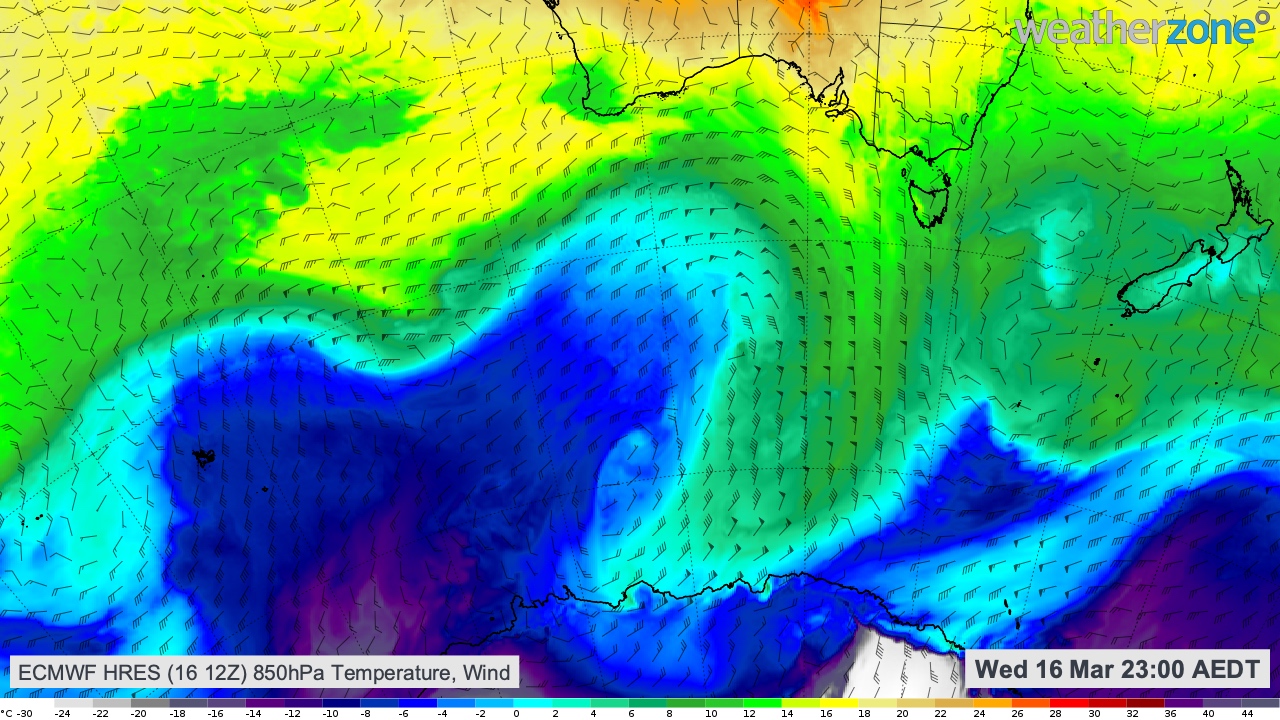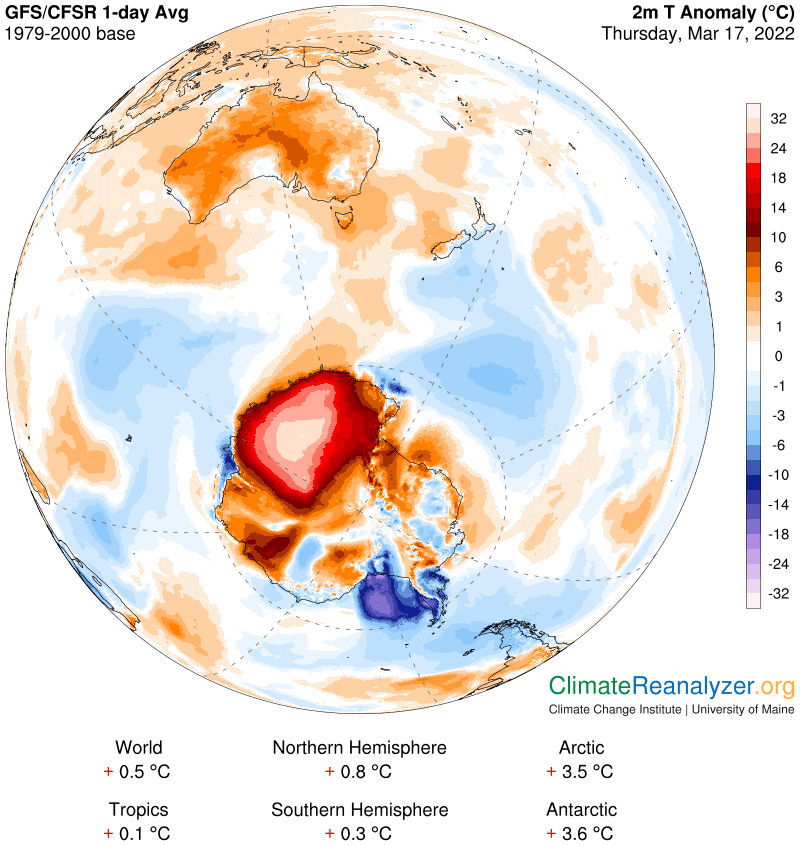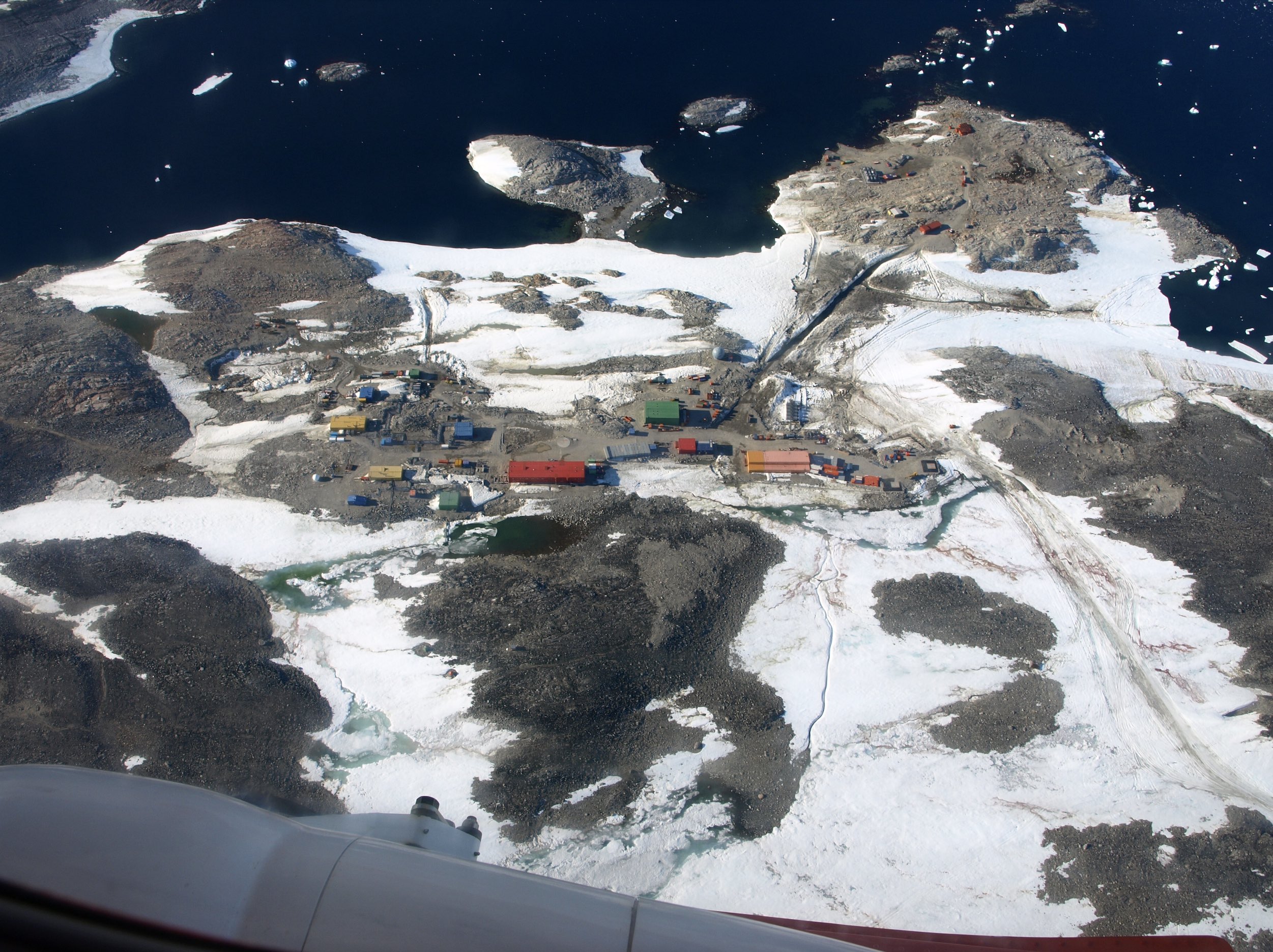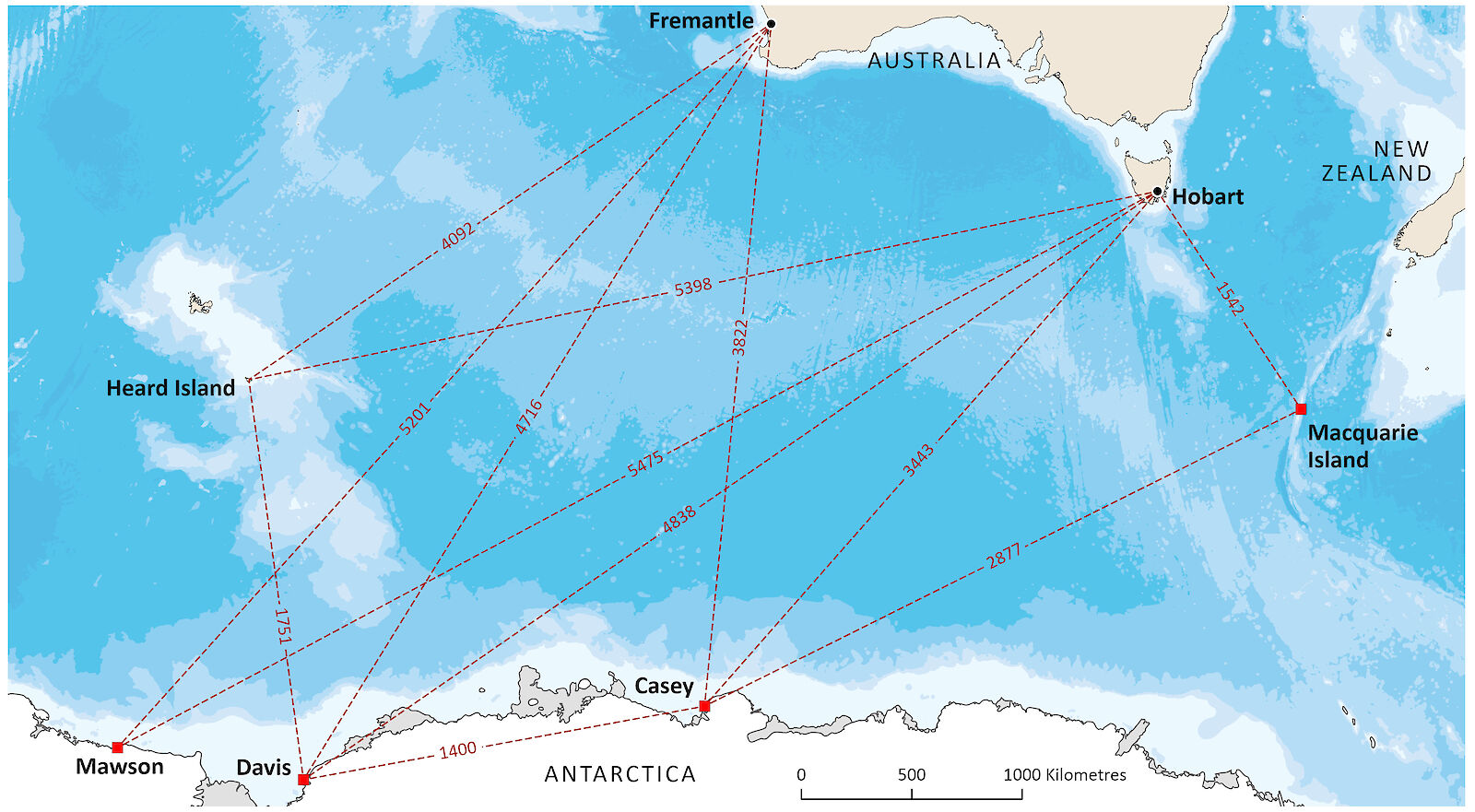Record March warmth at Australian Antarctic research station
Australia’s Casey Station just registered its highest March temperature on record as a late-summer polar heatwave grips parts of Antarctica.
Northerly winds sandwiched between an upper-level trough and upper-level ridge have allowed warm air to travel across the Southern Ocean and reach Antarctica this week.
The map below shows this tongue of warm air penetrating the polar continent on Wednesday, with the warmest air striking the coast of Antarctica to the south of Australia.

Image: Modelled 850hPa temperature and wind at 1200 UTC on Wednesday, March 16, 2022.
According to model-based data published by the Climate Change Institute at the University of Maine, the area-averaged surface air temperature over the Antarctica region on Thursday was about 3.6ºC above the long-term average. However, as the map below shows, air temperatures over some parts of East Antarctica were estimated to be close to 30ºC above average for this time of year.

Image: Modelled surface air temperature anomalies over the Antarctic and Australian regions on Thursday, March 17, 2022. Source: climatereanalyzer.org
This week’s injection of warm air saw Australia’s Casey Research Station register a maximum temperature of 5.6ºC on Wednesday, March 16. This is the station’s highest March temperature on record, with data available back to 1989.

Image: Casey Station from the air in 2010.
Prior to this week, the latest date to reach 5.6ºC at Casey Station on this side of the winter solstice was February 5th in 2008, more than one month earlier than this new record.
Casey Station is one of three permanent research stations on the Antarctic Continent operated by the Australian Antarctic Division. Scientists and/or support staff occupy Casey throughout the year. Sitting about 3,880km south of Perth, it’s the closes permanent Antarctic station to Australia.

Image: Map showing the locations of Australia’s polar research stations and major ports. Source: Australian Antarctic Division
The warm air mass that travelled towards Antarctica this week has also been making parts of southeastern Australia feel unseasonably warm. On Thursday, Hobart climbed almost 10ºC above average to a top of 29.2ºC, while some parts of the state had their warmest March day in several years.
Casey Station’s highest temperature on record was 9.2ºC on January 24, 2020. Its lowest temperature was minus 34.0ºC on August 24, 2005.